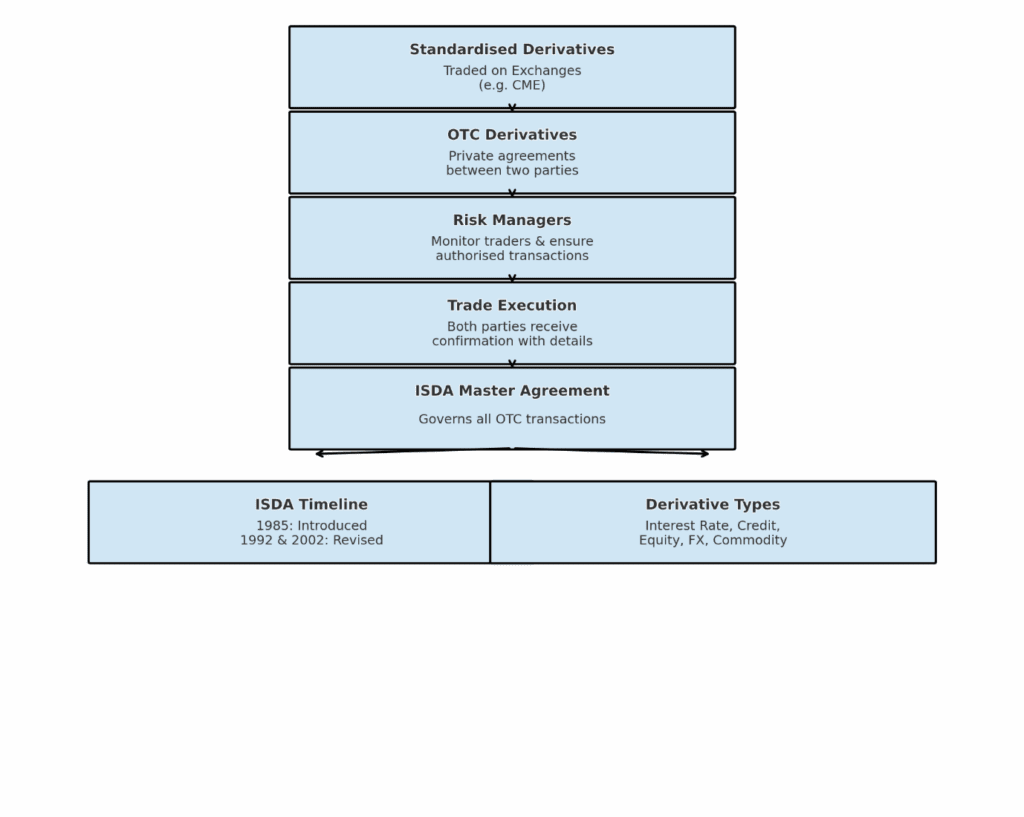You’ve invested in stocks before—sometimes you win, sometimes you don’t.
But what if there were a proven method to measure how much return you should expect?
Understanding the capital asset pricing model (CAPM) is one of the most practical steps you can take in your financial journey.
Whether you’re managing personal investments or pursuing a financial analysis course, understanding how you calculate expected returns gives you control. You deserve to know how risk translates into reward, and that’s exactly what this post helps you understand.
Where Did CAPM Come From?
In the early 1960s, investors needed a tool to determine whether a stock’s return was fair, given its risk. That’s when William Sharpe introduced the capital asset pricing model in 1964. Before CAPM, asset pricing was more of a gut feeling. Today, it’s a foundational element in modern finance, used everywhere from mutual fund analysis to equity valuation models.
For example, when a fund manager in Mumbai evaluates a portfolio worth ₹10 crore, he often turns to CAPM to decide if a stock is undervalued or overvalued. No need for guesswork—just inputs, formulas, and logic.
How Does CAPM Work?
The capital asset pricing model formula is:
Here’s what it means:
| Term | Explanation |
|---|---|
| Rf | Risk-free rate (usually government bond returns) |
| β (Beta) | Stock’s volatility relative to the market |
| Rm − Rf | Market risk premium (extra return for market risk) |
Let’s break it down with a micro-example:
- Government bond rate (Rf) = 6%
- Beta (β) = 1.2
- Market return (Rm) = 12%
Then:
Re = 6 + 1.2 × (12 – 6) = 13.2%
That means you should expect a 13.2% return on this asset, considering its risk.
This graph illustrates the Capital Asset Pricing Model (CAPM) relationship between Beta (β) and Expected Return. As you can see, the expected return increases linearly with Beta, highlighting how higher risk (Beta) leads to higher expected returns under CAPM.
Why does this matter?
Because if your analysis says this asset is likely to return only 11%, you’re probably better off avoiding it. Or demanding a discount.
How is the Capital Asset Pricing Model defined?
CAPM is a tool for estimating the expected return of an investment on the basis of its risk. This model formalises the link between the expected return and the market volatility, taking into consideration the specific sensitivity of stocks, Beta, with the aid of a specific equation.
The risk-free rate is normally defined as government debt, say, 10-year treasuries, while Beta indicates how closely the stock follows the market performance.
What Is the Capital Asset Pricing Model?
CAPM is not just theory. It’s a valuable instrument used every day in the analysis of finances, valuation methods, and professional talks. The Capital Asset Pricing Model plays a vital role in the calculation of the cost of equity, and finally calls upon WACC. And WACC?
This helps in determining the value of a firm using Net Present Value (NPV) or calculating important values such as enterprise value or equity value. The Capital Asset Pricing Model looks at how sensitive an asset is to market-wide risk, also called systematic risk, which investors can’t eliminate by just diversifying.
This sensitivity is usually measured using a number called Beta (β). The model also considers how much return you’d expect from the entire market, and compares that to the return you’d get from a risk-free asset like a government bond.
To work, CAPM assumes that investors care mainly about two things: the average return and how much that return might vary. It also assumes that markets don’t have extra costs, like fees or taxes, which makes diversification more effective. Under these conditions, the model shows that Beta alone helps determine the cost of equity for a stock.
Even though researchers have found cases where CAPM doesn’t hold up in practice, and newer models like arbitrage pricing theory and Merton’s portfolio theory exist, CAPM remains widely used. That’s because it’s simple, practical, and still works well in many real-world finance scenarios.
Breakdown to Application: How to Use CAPM in Real Life
A recent study assessed the applicability of the Capital Asset Pricing Model (CAPM) within the Indian capital market. Researchers collected weekly closing price data for 48 companies listed on the NSE Nifty 50 index over a 10 year period, from April 2011 to March 2021.
They constructed five portfolios, each containing 10 stocks, except for the final portfolio, which comprised eight stocks, arranged in descending order of Beta, starting from the highest to the lowest.
To evaluate the model, they applied a rolling regression methodology, where each data sample spanned three years. The study tested a constrained version of CAPM, as proposed by Bajpai and Sharma (2015), and compared it with the conventional model.
Results showed that CAPM remains highly relevant in the Indian context, with the constrained model outperforming the traditional CAPM in explaining returns.
Here’s how you apply the capital asset pricing model across scenarios:
1. Investment Valuation
Use CAPM to evaluate whether a stock is fairly priced. If the expected return is less than the CAPM-calculated return, the stock might get overpriced.
2. Portfolio Optimisation
CAPM helps you determine which assets to include in your portfolio. Mix assets that offer the best return for their risk.
3. Discount Rate in Valuation
In discounted cash flow (DCF) models, the CAPM return is at the cost of equity, which is essential to getting your valuations right.
Capital Asset Pricing Model Assumptions
For CAPM to hold, there are several assumptions:
| Assumption | Real-World Consideration |
|---|---|
| Investors are rational | In reality, emotions often drive decisions. |
| Markets are efficient | Not always—especially in developing markets |
| The risk-free rate is truly risk-free. | Government bonds may still have inflation risk. |
| Only systematic risk matters | Unsystematic risk can’t be diversified entirely. |
While these capital asset pricing model assumptions are idealistic, they provide a clean base from which to start. Real-world finance professionals adjust for these imperfections.
Comparing CAPM vs Real Returns in Practice
| Scenario | CAPM Expected Return | Actual Return | Verdict |
|---|---|---|---|
| Mid-cap Tech Stock | 14.5% | 13.2% | Slightly Overvalued |
| Large-cap FMCG Stock | 10.1% | 12.3% | Possibly Undervalued |
| Small-cap Biotech Stock | 17.6% | 21.0% | Outperforming expectations |
The CAPM isn’t just an equation. It’s a mindset shift. Once you understand risk-return trade-offs, you can assess assets with greater clarity. You no longer base choices on hearsay or market noise. You’re now equipped with a rational framework.
So, are you ready to use this model to your advantage?
Ready to understand how the capital asset pricing model can help shape your investment strategy?
Join a financial analysis course at Imarticus Learning and learn how to apply CAPM and other finance models with real-world relevance.
Postgraduate Financial Analysis Programme: Launch Your Finance Career with Confidence
Step into the world of high-growth finance roles with the Postgraduate Financial Analysis Programme by Imarticus Learning—a 200+ hour, immersive course designed for graduates with up to three years of experience in finance.
With over 45,000 successful career transitions, Imarticus Learning brings you an industry-aligned curriculum that also prepares you for CFA Level 1 roles in today’s competitive job market.
Receive 100% job assurance with seven guaranteed interview opportunities at top finance companies actively seeking skilled analysts. Build real-world expertise in financial statement analysis, valuation, financial modelling, equity research, and transaction execution—all while sharpening your Excel and PowerPoint skills.
This financial analysis course uses interactive simulations to mimic real workplace scenarios, giving you hands-on experience in financial planning and analysis tasks. Enhance professional visibility and credibility with a LinkedIn branding exercise and a well-organised personal branding endeavor.
Learn from finance gurus and visionary leaders who share their valuable industry knowledge and provide you with one-on-one mentoring in every class. Gain first-hand experience running current financial simulations that place you in the driver’s seat of making tough calls that emulate real-world scenarios.
Join the Postgraduate Financial Analysis Programme at Imarticus Learning and gain the knowledge, confidence, and placement support to excel in today’s dynamic finance sector.
FAQ
Q1. What is the capital asset pricing model used for?
With the CAPM, you could evaluate how much an asset should generate based on the risk relative to the market as a whole.
Q2. What are the core capital asset pricing model assumptions?
It assumes rational investors, efficient markets, and that only systematic risk matters.
Q3. How is the capital asset pricing model different from WACC?
The capital asset pricing model only considers equity costs, and WACC incorporates equity and debt costs.
Q4. Why is Beta important in CAPM?
Beta is an essential tool in determining the risk levels of an asset since it measures an asset’s volatility compared to the whole market.
Q5. Can you use CAPM for all asset types?
Mostly for equities; less reliable for illiquid or alternative assets.
Q6. What is the capital asset pricing model?
CAPM works as an instrument for determining probable returns of an investment in accordance with its risk profile.



